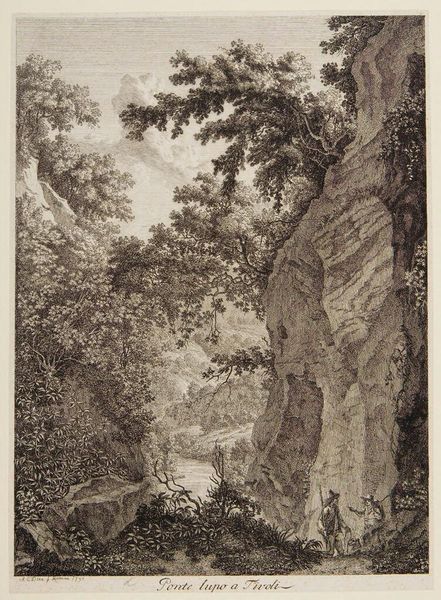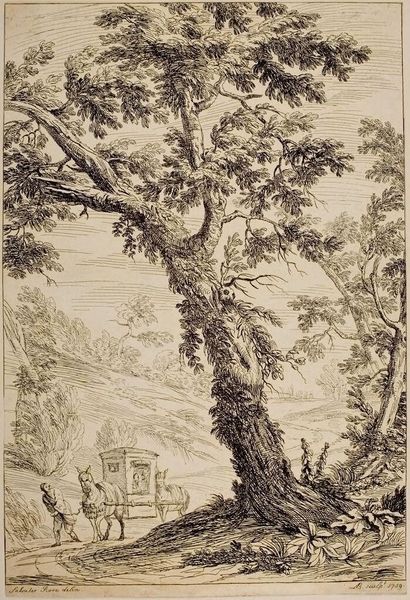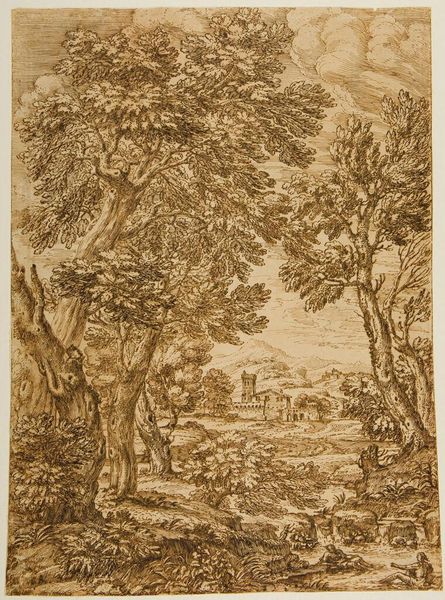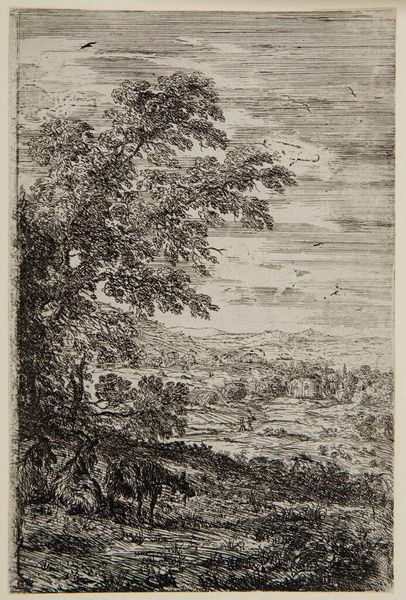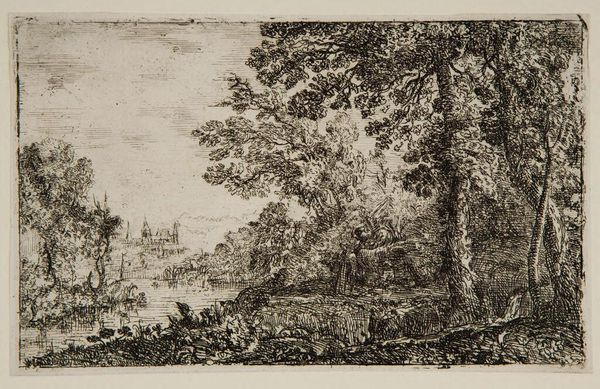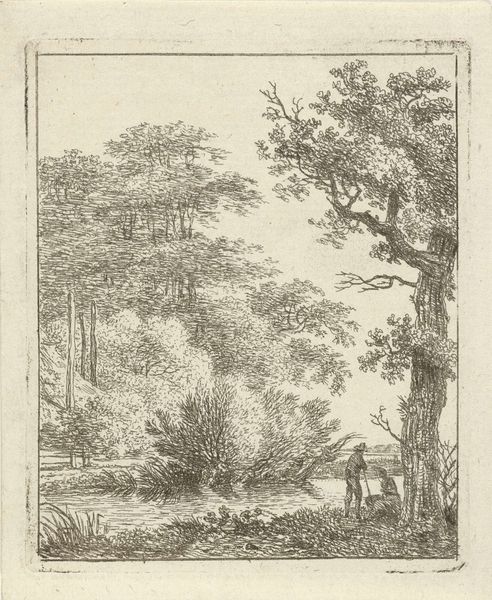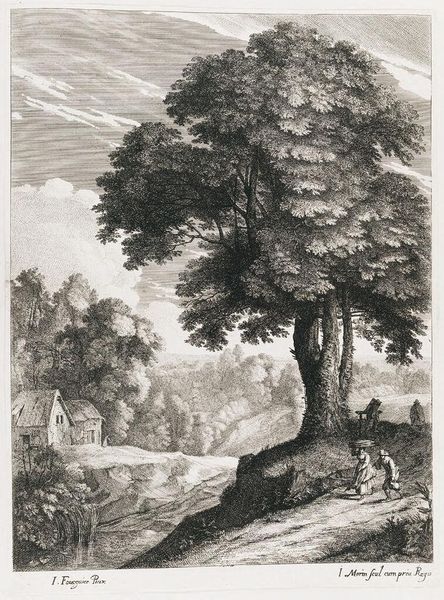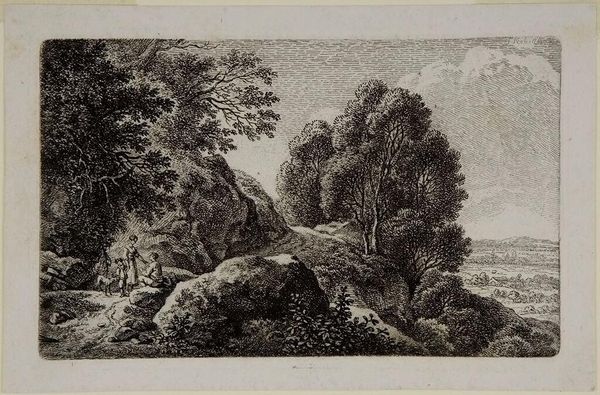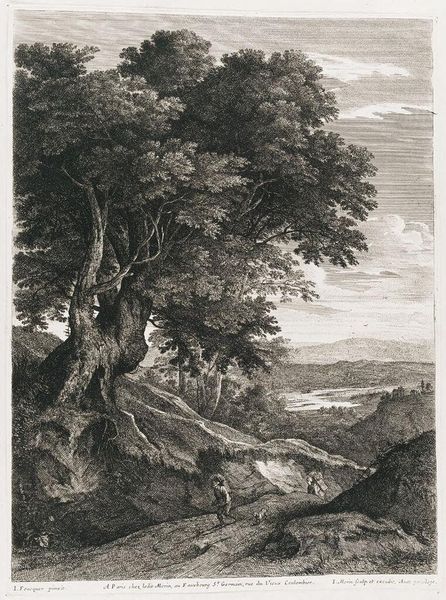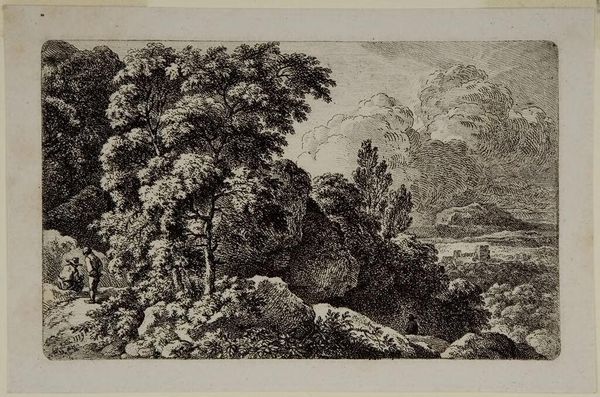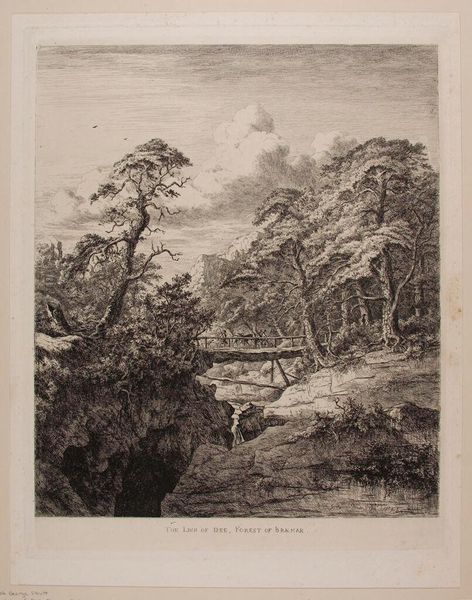
Copyright: CC0 1.0
Curator: Jacob Wilhelm Mechau, an etcher working around the turn of the 19th century, gives us this landscape, "Sotto a Ponte Lupo a Tivoli." What strikes you first? Editor: The stark contrasts! It's almost theatrical in its light and shadow, and the figures seem so small against that overwhelming natural backdrop. Curator: Mechau’s prints, particularly his landscapes, were quite popular. This print, made by way of etching, served as both art object and commodity. Editor: I see those figures as representative of the marginalized populations often overlooked in romanticized landscapes, their stories obscured by the dominant narrative of picturesque beauty. How does the process impact the reading of such imagery? Curator: The etching process allowed for replication and broad distribution, shaping perceptions of Tivoli and its people. Editor: It's a fascinating tension—the commodification of a place alongside the persistence of social realities for those living within it. It makes you think. Curator: Indeed, Mechau's landscape serves as a reminder of the complex interplay between art, commerce, and the lived experiences of individuals within a specific locale.
Comments
No comments
Be the first to comment and join the conversation on the ultimate creative platform.
